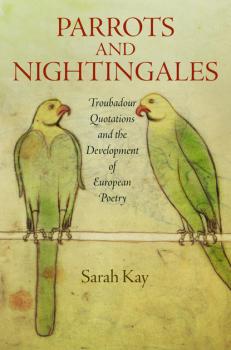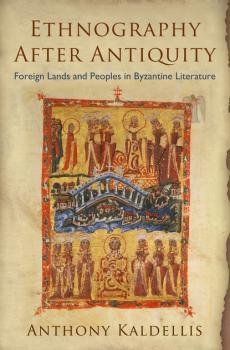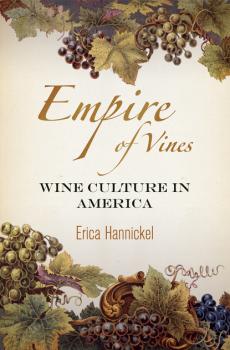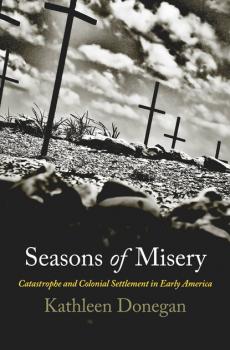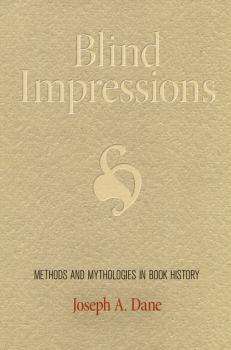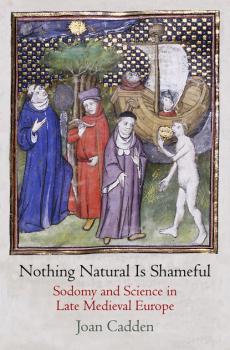ТОП просматриваемых книг сайта:
ЛИТМИР - LITMIR.BIZ - Электронная библиотека
Скачивание или чтение онлайн электронных книг.Аннотация
The love songs of Occitan troubadours inspired a rich body of courtly lyric by poets working in neighboring languages. For Sarah Kay, these poets were nightingales, composing verse that is recognizable yet original. But troubadour poetry also circulated across Europe in a form that is less well known but was more transformative. Writers outside Occitania quoted troubadour songs word for word in their original language, then commented upon these excerpts as linguistic or poetic examples, as guides to conduct, and even as sources of theological insight. If troubadours and their poetic imitators were nightingales, these quotation artists were parrots, and their practices of excerption and repetition brought about changes in poetic subjectivity that would deeply affect the European canon. The first sustained study of the medieval tradition of troubadour quotation, Parrots and Nightingales examines texts produced along the arc of the northern Mediterranean—from Catalonia through southern France to northern Italy—through the thirteenth century and the first half of the fourteenth. Featuring extensive appendices of over a thousand troubadour passages that have been quoted or anthologized, Parrots and Nightingales traces how quotations influenced the works of grammarians, short story writers, biographers, encyclopedists, and not least, other poets including Dante and Petrarch. Kay explores the instability and fluidity of medieval textuality, revealing how the art of quotation affected the transmission of knowledge and transformed perceptions of desire from the «courtly love» of the Middle Ages to the more learned formulations that emerged in the Renaissance. Parrots and Nightingales deftly restores the medieval tradition of lyric quotation to visibility, persuasively arguing for its originality and influence as a literary strategy.
Аннотация
Although Greek and Roman authors wrote ethnographic texts describing foreign cultures, ethnography seems to disappear from Byzantine literature after the seventh century C.E.—a perplexing exception for a culture so strongly self-identified with the Roman empire. Yet the Byzantines, geographically located at the heart of the upheavals that led from the ancient to the modern world, had abundant and sophisticated knowledge of the cultures with which they struggled and bargained. Ethnography After Antiquity examines both the instances and omissions of Byzantine ethnography, exploring the political and religious motivations for writing (or not writing) about other peoples. Through the ethnographies embedded in classical histories, military manuals, Constantine VII's De administrando imperio , and religious literature, Anthony Kaldellis shows Byzantine authors using accounts of foreign cultures as vehicles to critique their own state or to demonstrate Romano-Christian superiority over Islam. He comes to the startling conclusion that the Byzantines did not view cultural differences through a purely theological prism: their Roman identity, rather than their orthodoxy, was the vital distinction from cultures they considered heretic and barbarian. Filling in the previously unexplained gap between antiquity and the resurgence of ethnography in the late Byzantine period, Ethnography After Antiquity offers new perspective on how Byzantium positioned itself with and against the dramatically shifting world.
Аннотация
For almost three thousand years, Egypt and Mesopotamia were each ruled by the single sacred office of kingship. Though geographically near, these ancient civilizations were culturally distinct, and scholars have historically contrasted their respective conceptualizations of the ultimate authority, imagining Egyptian kings as invested with cosmic power and Mesopotamian kings as primarily political leaders. In fact, both kingdoms depended on religious ideals and political resources to legitimate and exercise their authority. Cross-cultural comparison reveals the sophisticated and varied strategies that ancient kings used to unify and govern their growing kingdoms. Experiencing Power, Generating Authority draws on rich material records left behind by both kingdoms, from royal monuments and icons to the written deeds and commissions of kings. Thirteen essays provocatively juxtapose the relationships Egyptian and Mesopotamian kings had with their gods and religious mediators, as well as their subjects and court officials. They also explore the ideological significance of landscape in each kingdom, since the natural and built environment influenced the economy, security, and cosmology of these lands. The interplay of religion, politics, and territory is dramatized by the everyday details of economy, trade, and governance, as well as the social crises of war or the death of a king. Reexamining established notions of cosmic and political rule, Experiencing Power, Generating Authority challenges and deepens scholarly approaches to rulership in the ancient world. Contributors: Mehmet-Ali Ataç, Miroslav Bárta, Dominique Charpin, D. Bruce Dickson, Eckart Frahm, Alan B. Lloyd, Juan Carlos Moreno Garcia, Ludwig D. Morenz, Ellen Morris, Beate Pongratz-Leisten, Michael Roaf, Walther Sallaberger, JoAnn Scurlock. PMIRC, volume 6
Аннотация
The lush, sun-drenched vineyards of California evoke a romantic, agrarian image of winemaking, though in reality the industry reflects American agribusiness at its most successful. Nonetheless, as author Erica Hannickel shows, this fantasy is deeply rooted in the history of grape cultivation in America. Empire of Vines traces the development of wine culture as grape growing expanded from New York to the Midwest before gaining ascendancy in California—a progression that illustrates viticulture's centrality to the nineteenth-century American projects of national expansion and the formation of a national culture. Empire of Vines details the ways would-be gentleman farmers, ambitious speculators, horticulturalists, and writers of all kinds deployed the animating myths of American wine culture, including the classical myth of Bacchus, the cult of terroir , and the fantasy of pastoral republicanism. Promoted by figures as varied as horticulturalist Andrew Jackson Downing, novelist Charles Chesnutt, railroad baron Leland Stanford, and Cincinnati land speculator Nicholas Longworth (known as the father of American wine), these myths naturalized claims to land for grape cultivation and legitimated national expansion. Vineyards were simultaneously lush and controlled, bearing fruit at once culturally refined and naturally robust, laying claim to both earthy authenticity and social pedigree. The history of wine culture thus reveals nineteenth-century Americans' fascination with the relationship between nature and culture.
Информация о книге
Автор произведения Erica Hannickel
Аннотация
Between the 1960s and the 1980s, the human rights movement achieved unprecedented global prominence. Amnesty International attained striking visibility with its Campaign Against Torture; Soviet dissidents attracted a worldwide audience for their heroism in facing down a totalitarian state; the Helsinki Accords were signed, incorporating a «third basket» of human rights principles; and the Carter administration formally gave the United States a human rights policy. The Breakthrough is the first collection to examine this decisive era as a whole, tracing key developments in both Western and non-Western engagement with human rights and placing new emphasis on the role of human rights in the international history of the past century. Bringing together original essays from some of the field's leading scholars, this volume not only explores the transnational histories of international and nongovernmental human rights organizations but also analyzes the complex interplay between gender, sociology, and ideology in the making of human rights politics at the local level. Detailed case studies illuminate how a number of local movements—from the 1975 World Congress of Women in East Berlin, to antiapartheid activism in Britain, to protests in Latin America—affected international human rights discourse in the era as well as the ways these moments continue to influence current understanding of human rights history and advocacy. The global south—an area not usually treated as a scene of human rights politics—is also spotlighted in groundbreaking chapters on Biafran, South American, and Indonesian developments. In recovering the remarkable presence of global human rights talk and practice in the 1970s, The Breakthrough brings this pivotal decade to the forefront of contemporary scholarly debate. Contributors: Carl J. Bon Tempo, Gunter Dehnert, Celia Donert, Lasse Heerten, Patrick William Kelly, Benjamin Nathans, Ned Richardson-Little, Daniel Sargent, Brad Simpson, Lynsay Skiba, Simon Stevens.
Информация о книге
Автор произведения Группа авторов
Аннотация
The stories we tell of American beginnings typically emphasize colonial triumph in the face of adversity. But the early years of English settlement in America were characterized by catastrophe: starvation, disease, extreme violence, ruinous ignorance, and serial abandonment. Seasons of Misery offers a provocative reexamination of the British colonies' chaotic and profoundly unstable beginnings, placing crisis—both experiential and existential—at the center of the story. At the outposts of a fledgling empire and disconnected from the social order of their home society, English settlers were both physically and psychologically estranged from their European identities. They could not control, or often even survive, the world they had intended to possess. According to Kathleen Donegan, it was in this cauldron of uncertainty that colonial identity was formed. Studying the English settlements at Roanoke, Jamestown, Plymouth, and Barbados, Donegan argues that catastrophe marked the threshold between an old European identity and a new colonial identity, a state of instability in which only fragments of Englishness could survive amid the upheavals of the New World. This constant state of crisis also produced the first distinctively colonial literature as settlers attempted to process events that they could neither fully absorb nor understand. Bringing a critical eye to settlers' first-person accounts, Donegan applies a unique combination of narrative history and literary analysis to trace how settlers used a language of catastrophe to describe unprecedented circumstances, witness unrecognizable selves, and report unaccountable events. Seasons of Misery addresses both the stories that colonists told about themselves and the stories that we have constructed in hindsight about them. In doing so, it offers a new account of the meaning of settlement history and the creation of colonial identity.
Аннотация
Workers in the United States are losing sleep. In the global economy a growing number of employees hold jobs—often more than one at once—with unpredictable hours. Even before the rise of the twenty-four-hour workplace, the relationship between sleep and industry was problematic: sleep is frequently cast as an enemy or a weakness, while constant productivity and flexibility are glorified at the expense of health and safety. Dangerously Sleepy is the first book to track the longtime association of overwork and sleep deprivation from the nineteenth century to the present. Health and labor historian Alan Derickson charts the cultural and political forces behind the overvaluation—and masculinization—of wakefulness in the United States. Since the nineteenth century, men at all levels of society have toiled around the clock by necessity: steel workers coped with rotating shifts, Pullman porters grappled with ever-changing timetables and unrelenting on-call status, and long-haul truckers dealt with chaotic life on the road. But the dangerous realities of exhaustion were minimized and even glamorized when the entrepreneurial drive of public figures such as Thomas Edison and Donald Trump encouraged American men to deny biological need in the name of success. For workers, resisting sleep became a challenge of masculine strength. This lucid history of the wakeful work ethic suggests that for millions of American men and women, untenable work schedules have been the main factor leading to sleep loss, newer ailments such as shift work sleep disorder, and related morbidity and mortality. Dangerously Sleepy places these public health problems in historical context.
Аннотация
"As bibliographers or book historians, we perform our work by changing the function of the objects we study. We rarely pick up an Aldine edition to read one of the classical texts it contains. . . . Print culture, under this notion, is not a medium for writing or thought but a historical object of study; our bibliographical field, our own concoction, becomes the true referent of the objects we define as its foundation."—From the Introduction What is a book in the study of print culture? For the scholar of material texts, it is not only a singular copy carrying the unique traces of printing and preservation efforts, or an edition, repeated and repeatable, or a vehicle for ideas to be abstracted from the physical copy. But when the bibliographer situates a book copy within the methods of book history, Joseph A. Dane contends, it is the known set of assumptions which govern the discipline that bibliographic arguments privilege, repeat, or challenge. «Book history,» he writes, «is us.» In Blind Impressions , Dane reexamines the field of material book history by questioning its most basic assumptions and definitions. How is print defined? What are the limits of printing history? What constitutes evidence? His concluding section takes form as a series of short studies in theme and variation, considering such matters as two-color printing, the composing stick used by hand-press printers, the bibliographical status of book fragments, and the function of scholarly illustration in the Digital Age. Meticulously detailed, deeply learned, and often contrarian, Blind Impressions is a bracing critique of the way scholars define and solve problems.
Аннотация
As millions of Americans struggle to find work in the wake of the Great Recession, politicians from both parties look to regulation in search of an economic cure. Some claim that burdensome regulations undermine private sector competitiveness and job growth, while others argue that tough new regulations actually create jobs at the same time that they provide other benefits. Does Regulation Kill Jobs? reveals the complex reality of regulation that supports neither partisan view. Leading legal scholars, economists, political scientists, and policy analysts show that individual regulations can at times induce employment shifts across firms, sectors, and regions—but regulation overall is neither a prime job killer nor a key job creator. The challenge for policymakers is to look carefully at individual regulatory proposals to discern any job shifting they may cause and then to make regulatory decisions sensitive to anticipated employment effects. Drawing on their analyses, contributors recommend methods for obtaining better estimates of job impacts when evaluating regulatory costs and benefits. They also assess possible ways of reforming regulatory institutions and processes to take better account of employment effects in policy decision-making. Does Regulation Kills Jobs? tackles what has become a heated partisan issue with exactly the kind of careful analysis policymakers need in order to make better policy decisions, providing insights that will benefit both politicians and citizens who seek economic growth as well as the protection of public health and safety, financial security, environmental sustainability, and other civic goals. Contributors: Matthew D. Adler, Joseph E. Aldy, Christopher Carrigan, Cary Coglianese, E. Donald Elliott, Rolf Färe, Ann Ferris, Adam M. Finkel, Wayne B. Gray, Shawna Grosskopf, Michael A. Livermore, Brian F. Mannix, Jonathan S. Masur, Al McGartland, Richard Morgenstern, Carl A. Pasurka, Jr., William A. Pizer, Eric A. Posner, Lisa A. Robinson, Jason A. Schwartz, Ronald J. Shadbegian, Stuart Shapiro.
Аннотация
In his Problemata , Aristotle provided medieval thinkers with the occasion to inquire into the natural causes of the sexual desires of men to act upon or be acted upon by other men, thus bringing human sexuality into the purview of natural philosophers, whose aim it was to explain the causes of objects and events in nature. With this philosophical justification, some late medieval intellectuals asked whether such dispositions might arise from anatomy or from the psychological processes of habit formation. As the fourteenth-century philosopher Walter Burley observed, «Nothing natural is shameful.» The authors, scribes, and readers willing to «contemplate base things» never argued that they were not vile, but most did share the conviction that they could be explained. From the evidence that has survived in manuscripts of and related to the Problemata , two narratives emerge: a chronicle of the earnest attempts of medieval medical theorists and natural philosophers to understand the cause of homosexual desires and pleasures in terms of natural processes, and an ongoing debate as to whether the sciences were equipped or permitted to deal with such subjects at all. Mining hundreds of texts and deciphering commentaries, indices, abbreviations, and marginalia, Joan Cadden shows how European scholars deployed a standard set of philosophical tools and a variety of rhetorical strategies to produce scientific approaches to sodomy.

